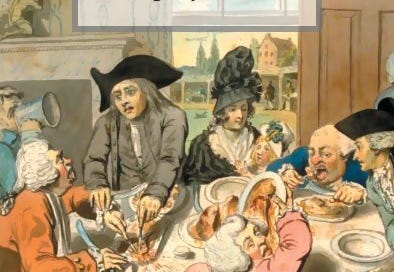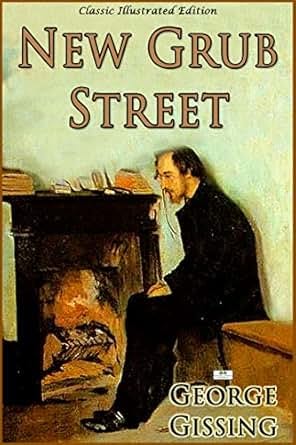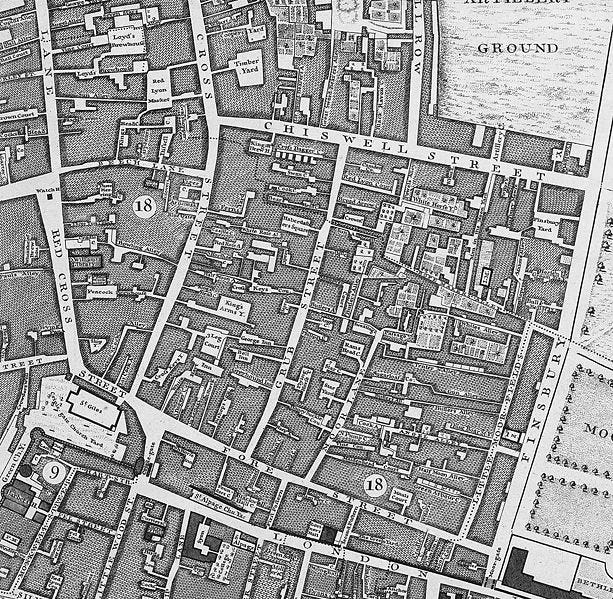Grub Street: the world of literary hacks, or mediocre, needy writers who write for hire. The term originated in the 18th century and was frequently used by writers. The term was a metaphor for the commercial production of printed matter, regardless of whether such matter actually originated on Grub Street itself.1
The novelist Tobias Smollett, himself engaged much of his life in Grub Street hackwork, provided a memorable scene of a Grub Street dinner party in Humphry Clinker (1771). 23
George Gissing’s novel New Grub Street (1891) also deals with London literary life.4
The Grub Street Project
The Grub Street Project is a digital edition of eighteenth-century London. By mapping its print culture, literature, and trades, it aims to create both a historically accurate visualization of the city's commerce and communications, and a record of how its authors and artists portrayed it.
Grub Street (now Milton Street) was both a real place and an abstract idea. For authors such as Alexander Pope and Jonathan Swift, it represented base commercialization, hack writing, and the prostitution of literary ideals. Its historical record, however obscure, presents a more complex scene, and one that is difficult to trace. Where, exactly, was "over against the lower Pump in Grub-street" (where one might find the printer John Clowes) or "in Grub-street neer the upper pump" (Bernard Alsop) or "near the Upper-Pump in Grubstreet" (Elizabeth Alsop)? What is left to us are the traces of this topography in maps (Strype, Rocque), in texts (The Dunciad Variorum), and in images (Bridewell, 1720).
Both location and metaphor, this now-vanished street represents what is largely invisible to us now, the print culture of eighteenth-century London (both high and low), and the construction of eighteenth-century London as a network of textual representations. The Grub Street Project examines new possibilities that digital mapping provides to better understand the city as topography and as social text, and print culture as a distributed social network.
From Grub Street to Fleet Street: An Illustrated History of English Newspapers to 1899. 5
“Grub Street.” Encyclopædia Britannica Online. Encyclopædia Britannica Inc, 2020.
Ibid.
Smollett, T. 1771; 2015. The Expedition of Humphry Clinker : An Authoritative Text, Backgrounds and Contexts Criticism. Edited by Evan Gottlieb. Second edition. New York: W.W. Norton & Company. "This Norton Critical Edition restores the full title to the 1771 novel and emphasises the growing recognition of Smollett as a major British author. The text, based on the first edition, is accompanied by explanatory footnotes. "Backgrounds and Contexts" includes selections from Smollett's early poetry as well as non-fiction writing. "Criticism" presents the most important reviews of the book. "Contemporary Criticism" focuses on recent scholarship. A chronology and a bibliography are also included"
Gissing, George. New Grub Street: A Novel /. Smith, Elder, 1891; Flynn, Kara. “Gissing, Grub Street, and the Transformation of British Publishing.” Libraries (University Park, Pa.) 5, no. 2 (2021): 289–91.
Clarke, Bob. 2004. From Grub Street to Fleet Street: An Illustrated History of English Newspapers to 1899. Aldershot, Hants, England: Ashgate.







We have our modern versions of this in "true crime" compendia that may or may not have anything to do with true, the Ancient Aliens craze, porn story anthologies, and similar.
My goodness, you have been busy. I am still in Boston!